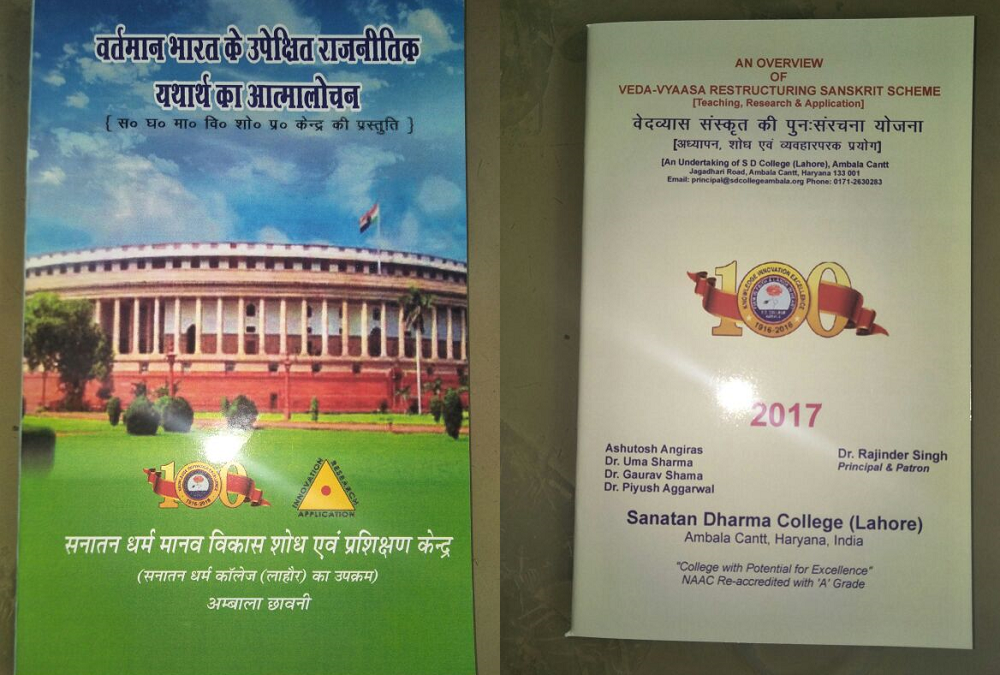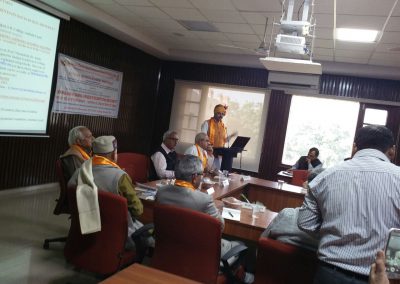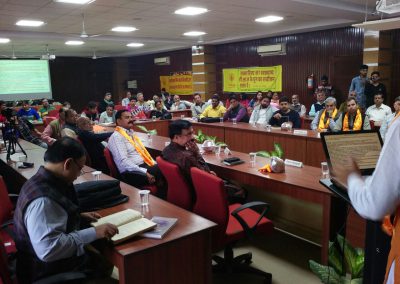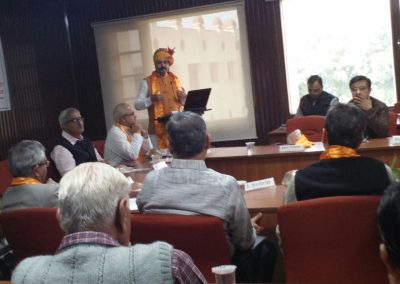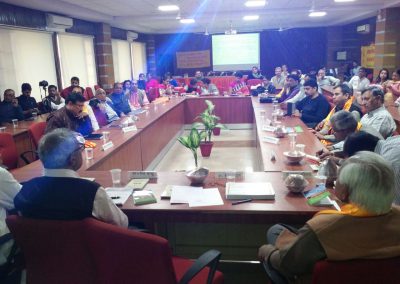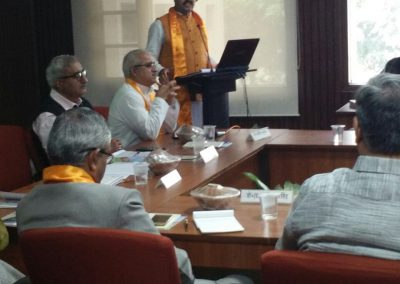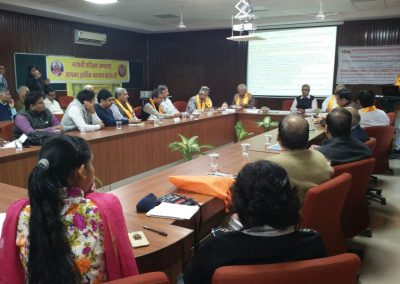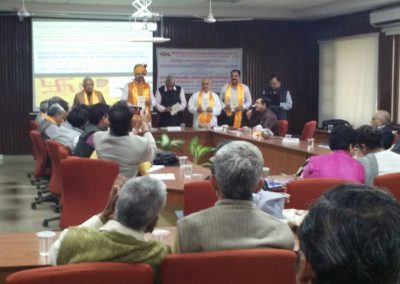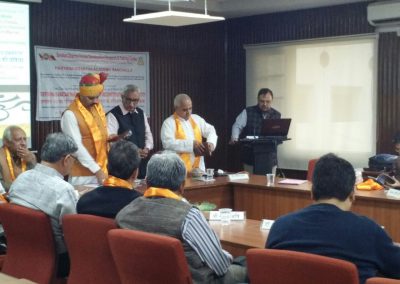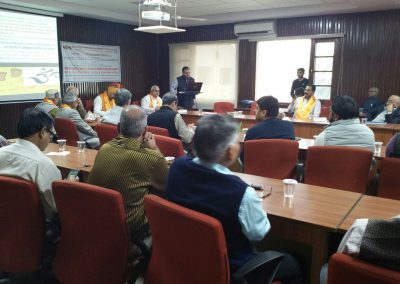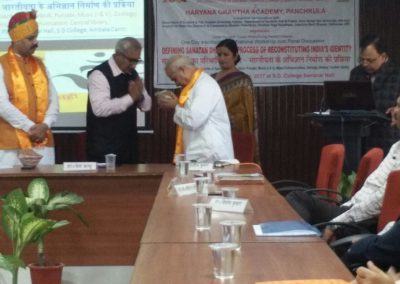100 years of establishment of S. D. College [Lahore] makes SDHDR&T Center to rethink, re-evaluate and redefine the nature, scope and value system of Sanatan dharma in the fast changing social, political, economic and religious, moral value system.
- Does not 100 years of maturity forces all of us, who claim to be associated with Sanatan vision and values, to give a serious thought regarding the achievements, standing, role, contribution, accomplishments and responsibilities of the Sanatan dharma?
- Does any one of us has enough courage to say –“yes, I understand what sanatan dharma is? Yes, I know what it means to be a sanatnist?” If yes then let us face the direct questions regarding caste system, equality, justice and economic freedom and other human values?
- Do we have to define sanatan dharma in the terms of religion only or a way of life?
- What is the legal sanctity of the S.D in the terms of law, constitution, secularism and democratic setup? What chances SD has as political force or political identity?
- What answers SD. has to the globalization, open market economy and consumerist way of life of every Indian?
- Have the academic institutions of SD been able to define the education system of this country or are they following the education system blindly in the name of keeping the pace with the industrial demands?
Lot more questions are there to challenge the identity; definition and vision of SD. Issues before SD are not only highly controversial but are also self contradictory in nature?
The mammoth task before the intelligentsia and academicians is how to redefine, reinterpret and redirect SD so that the people of this land and people around the world should be able to face the onslaught of globalization, commercialization etc. in the terms SD. In the history of SD, Prior to the advent of Islam the temper/ethos of SD is found to be based on the foundations of shraddha (faithfulness or trustfulness) and ‘sattarka’(reasoning or inquiry). The synergy of both constitutes the main spring of Vedic imaginative insights, sacrificial experience and intellectual intuitions. The plain and simple flux of shruti and smriti traditions gave rise to a kind of system rising from a doctrinal orthodoxy and culminating into orhtopraxy. This praxis or a way of doing something in a practical way or putting a theory into practice was the essential reality of SD. On the one hand it gave birth to a substantial social system and on the other hand even the concept of Absolute Brahman Consciousness arose from the search into the meaning of the Yajna or the sacrifice. After the fall of Vardhan Empire one finds signs of an overall decline of this SD tradition.
In the twelfth century (A.D.) after the regeneration or revitalization of Hindu Dharma by Acharya Raamaanuja, there was a vast interchange between the South Indian folk-bhakti cult and the highest intellectual achievements of ancient India. This cultural resurgence constituted a neo-Hindu socio-political forum to fight against a dust storm of invasions of Islam. Hindu-nationalism took a concrete shape during this period and Mahaarashatra emerged as a symbol of synthesis of the two indigenous traditions of South and north India. Bhushan, a poet of Hindi (1613 to 1705) traveled from Delhi to Pune and sang the glory and greatness of SD and was patronized by Shivaji and Chatrasaal bundela. He in his two works Shiva-baavani and Shivraj-bhushan, used this term Hindu as a noun time and again for non-Islamic people of India who were struggling against the terror of Muslims and at the same time maintaining the roots of ancient Indian orthopraxy. None of the Hindus was against the common Muslim people who were following their religious norms without any prejudice and predilections against Hindus and practicing Hindu-art and life-style. A Shivaji`s contemporary Muslim historian Khafi Khan has recorded that “Shivaji made a rule that his followers do not harm mosques, the holy book and the women of anyone.” With this character and courage he exhausted the whole of energy of a huge Moughal empire involving its armed forces in the South India for a long period of 25 years or rather till the death of Aurangzeb.
This SD revitalized in the south west of India continued to fight against the forces of Islamic invaders as well as British invasions till the goal of Swaraj was achieved in 1947. And then suddenly we find a class, growing out of Anglo-Indian sensibility; opposing and challenging the validity of traditional SD Indian-ness. This alienation of SD mind involves a disorientation and confusion of our own perceptions of surrounding world and our own cultural being. Perhaps this degenerating condition of SD mind compelled a scholar like Anand Kumar Swami to comment in his famous book “ Dance of Shiva” in 1913; page 73 : “It is hard to realize how completely the continuity of Indian life has been severed. A single generation of English education suffices to break the threads of tradition and to create a non-descript and superficial being deprived of all roots – sort of intellectual pariah who does not belong to the East or the West, the past or future.”
If one investigates sincerely and with an open mind then one finds SD is based entirely on scientific experience. Its innate humanism acknowledges the coexistence of other living beings equally. It has a firm conviction of cyclic operation of time where there is no beginning and no end; which perceives Dharma as a universal law of being and becoming. Any religion representing a segmented world view and fighting for its unique supremacy can not do any good to the present humanity at large. Therefore, the coming world must have its own moral and social code. So we need to thoroughly analyze the deep rooted problems of modern humanity and the complexities of Indian psyche.
One should convincingly argue with the modern man of Dharma and recommend rediscovering the real characteristics of SD mind to subscribe some new value system to face the current problems arising from the conflict of technology and moral sciences. The research papers need to discuss in detail the different aspects of SD with reference to the authentic study of the relevant questions with the esoteric meanings of the constituent concepts of Hindu dharma as relating to the Vedic varna-aashrama-vyavasthaa, the sacred Sanskrit language, Ayurveda; the Hindu science of life, the Hindu mathematics, the science of Kama, the Artha and Dharma, Hindu cosmology, Hindu mythology and ancient Indian history etc.
No doubt that the catechetical method of presenting the substantial theme of Dharma-Artha–Kama and Moksha has been continuously followed by the Indian thinkers of ancient and as well as modern India, in the Upanishads, Puranas, Tantras and Agamas. But in this period of over-whelming intellectual exercises, this kind of filial approach to the SD will be really an attempt of its own kind.
सनातन धर्म की परिभाषा को लेकर हुई चर्चा में प्रख्यात संस्कृत विद्वान डॉ रमाकांत अंगिरस, प्रो सुरेंद्र मोहन मिश्र, डॉ कामदेव झा, डॉ सी पी सिंह, डॉ देशबंधु, डॉ नंद किशोर शर्मा, विनय सिंघल और नीरज अत्रि ने भाग लिया।


